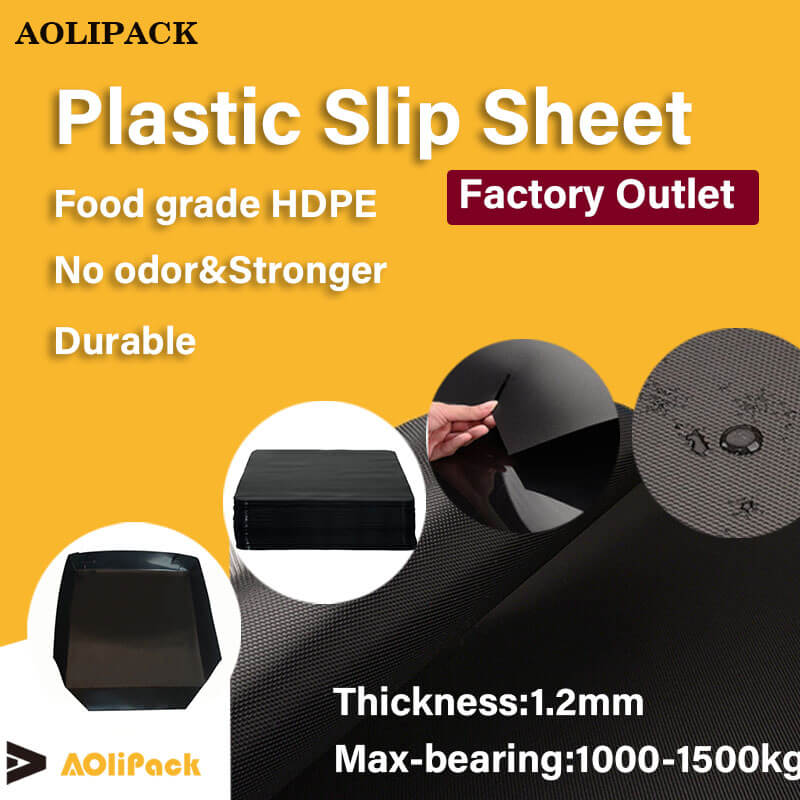What Is a Slip Sheet? The Complete Guide to This Logistics Innovation
In today's fast-moving supply chains, businesses constantly seek ways to improve efficiency and reduce costs. One innovation transforming material handling is the slip sheet—a simple yet revolutionary alternative to traditional pallets. This comprehensive guide explains exactly what slip sheets are, how they work, and why they're becoming essential in modern logistics.
Definition: What Is a Slip Sheet?
A slip sheet is an ultra-thin (typically 0.5-3mm thick), rigid platform that serves as:
A pallet alternative for unit loads
A load base for forklift handling
A protective layer between products and surfaces
Made from durable materials like corrugated fiberboard, plastic, or laminated composites, slip sheets provide all the functionality of pallets without the bulk or weight.
Key Components & Design Features
1. Material Types
Material Thickness Weight Capacity Best For
Kraft Paper 0.8-1.2mm 1,500kg Dry environments, one-way shipments
Plastic (HDPE) 1.5-3mm 2,500kg Damp conditions, reusable applications
Laminated 2-3mm 3,000kg Heavy industrial loads, harsh environments
2. Standard Sizes
48" x 40" (most common, matches standard pallet size)
48" x 48" (for larger loads)

Custom dimensions available for specialty applications
3. Lip/Tab Design
Many slip sheets feature:
Single lip (one extended edge for forklift engagement)
Multi-lip (multiple engagement points)
Tabless (for fully automated systems)
How Slip Sheets Work: The Handling Process
Loading Preparation
Products are stacked directly on the slip sheet
Often secured with stretch wrap or straps
Forklift Operation
Special push-pull attachment slides under the sheet
Clamping mechanism grips the lip/tab
Entire load is pulled onto the forklift's platform
Transport & Storage
Loads move exactly like palletized goods
Can be stacked in racks or storage systems
Unloading
Reverse process using the same equipment
Slip sheet often remains with receiver (unlike pallets)
Why Use Slip Sheets? Key Benefits
1. Cost Savings
90% cheaper than wooden pallets per unit
Eliminates pallet return logistics
Reduces freight costs through weight savings
2. Space Efficiency
Saves 15-20% of trailer/container space
Enables 30% more product per shipment
Ideal for automated storage systems
3. Sustainability Advantages
75% lower carbon footprint than wood pallets
100% recyclable materials
No ISPM-15 fumigation requirements
4. Operational Improvements
Faster loading/unloading cycles
Reduced product damage
Better compatibility with automation
Slip Sheets vs. Pallets: A Direct Comparison
Feature Slip Sheets Wooden Pallets
Thickness 0.5-3mm 100-150mm
Weight 0.5-3kg 15-25kg
Cost Per Unit
0.50
−
0.50−6.00
10
−
10−25
Reusability Limited (1-5 uses) 50+ trips
Space Savings 15-20% more cargo Standard
Equipment Needs Push-pull forklift Standard forklift
Common Applications
1. Retail & E-Commerce
Amazon fulfillment centers
Big-box store distribution
2. Food & Beverage
Cold chain logistics
Grocery distribution
3. Manufacturing
Automotive parts
Industrial components
4. International Shipping
Ocean container optimization
Cross-border trade
Implementation Considerations
Equipment Requirements
Forklift push-pull attachments (
5
,
000
−
5,000−8,000 each)
Potential need for stretch wrap machines
Training Needs
4-8 hours for forklift operators
Load building best practices
Load Configuration
Proper weight distribution
Securement methods (stretch wrap/strapping)
Future of Slip Sheet Technology
Smart sheets with embedded sensors
Self-locking designs eliminating wrap
Biodegradable materials for sustainability
Automation integration with robotic systems
Conclusion
Slip sheets represent a smart evolution in material handling—offering substantial cost savings, space optimization, and environmental benefits compared to traditional pallets. While requiring some initial investment in equipment and training, their advantages make them particularly valuable for high-volume shippers, automated facilities, and companies prioritizing sustainable logistics.
As supply chains continue seeking efficiency improvements, slip sheet adoption is projected to grow significantly. Businesses considering this transition should evaluate their shipment profiles, equipment capabilities, and potential ROI—which typically materializes within 12-18 months for most operations. In the modern logistics landscape, understanding and potentially implementing slip sheet technology could provide your business with a meaningful competitive edge.







 wechat consulting
wechat consulting